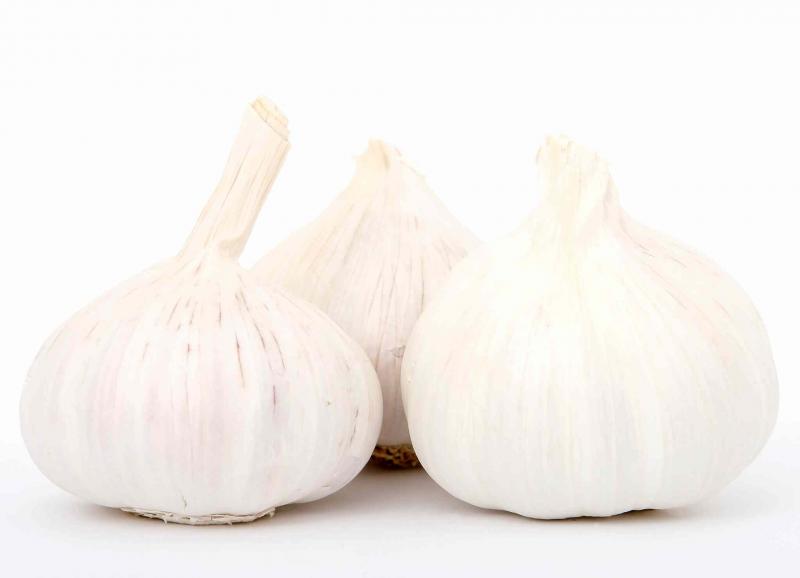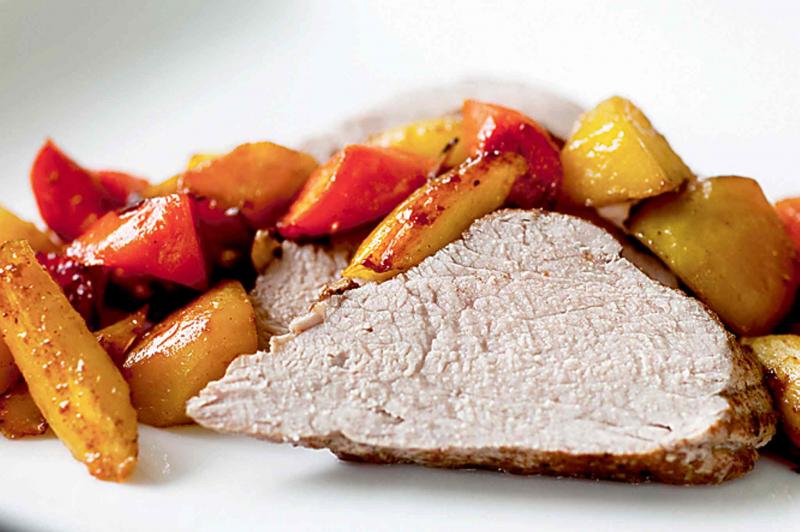
"In the natural world everything has its place with flavour."
So says Jon Royal, executive chef of the School of Hospitality and Culinary Arts at Red River College.
"Between onions and garlic in the plant kingdom, both have such a beautiful aroma and versatility. You can eat garlic fresh or cooked; or change the flavour completely by roasting it. Garlic can be crispy, soft, even poached. It can lend its flavour with subtlety or it can be in the forefront. You can create the most garlicky Caesar salad dressing ever or a really subtle roasted garlic cream sauce, both with flavours that are completely unique."
Royal visits farmers markets for the choicest heads of garlic, buying not three or four, but just one for a particular dish he is preparing. Not married to any particular garlic variety, Royal trusts the farmer and knows the feel and smell of fresh garlic, buying whatever appeals to him, confident of garlic's power to satisfy.
Local garlic growers began harvesting their crops starting in mid-August. By mid-September, they will begin planting next year's crop. In Manitou, the Honey Garlic and Maple Syrup Festival is held annually to celebrate the harvest.
This year's event, held Sept. 6 and 7, will culminate in a delicious feast for approximately 500 visitors. Interested in attending? Contact Pat Mitchell, 204-242-2530.
Evelyn Janzen, a local garlic grower and past vendor at the festival, says although there have been some rumblings among garlic growers following a harsh winter, it was a good year.
"I have some awesome stuff. Firm, round heads and the cloves are large," said Janzen, who only grows hardneck garlic. The late Joe Kozac, a renowned garlic grower in the Manitou and La Rivière area and founder of the Honey Garlic and Maple Syrup Festival, inspired Janzen to grow garlic.
Once the ground cools, Janzen will begin planting a couple of weeks earlier than some other growers.
"Location determines when you plant," said Janzen. "Some might plant their garlic in late fall, but we are right down at the bottom of Pembina Valley, along the Pembina River, so we tend to have cooler nights and earlier frost, with sometimes a five-degree difference in temperature from Winnipeg."
Dave Hanson of Sage Garden Herbs sells about 10 varieties of certified organic hardneck-form garlic (Allium sativum ophioscordon), so called because the stem dries hard in the centre of the bulb. The cloves are larger and easier to separate than the softneck form of garlic, although the softneck type stores longer.
The softneck type, though, is not as suited to our cold climate. Hardneck varieties are flavourful and include the rocambole or Italian garlics. Hanson said these and eastern European-type garlics such as the purple stripes and blue purple stripes are characterized by a great ability to survive winter.
There is a demand for Russian garlics. A classic variety called Red Russian, said Hanson, is reliable in our region and quite wonderful.
"Romanian Red, a porcelain hardneck variety is a very potent, spicy, fiery garlic."
Some of the more common softneck varieties are artichoke and silverskin. Closer to zone 4, Hanson said softneck varieties are generally zone 4 hardy. Silverskin garlics have an exceptionally long storage life and are high yielding. They are also the type most often used in long braids of garlic.
Dawn Buchanan lives at Northern Sun Farm Co-op, situated on 240 acres of land south of Steinbach. Buchanan has been growing about 6,000 plants annually using the same hardneck variety of garlic, Music, for the past 15 years. One of the best-yielding varieties with a medium hot flavour, Music is white-skinned with a pink blush, producing only five to six cloves per bulb, which are easy to separate and peel.
Buchanan said it stores really well and she is still eating the garlic that was harvested last August. She is reasonably happy with this year's crop, saying she has seen better. "There is no evidence of disease or pest damage," said Buchanan. "However, it looks smaller than we normally like."
After the curing process, about two to three weeks in a shed that has no direct light and good ventilation, Buchanan will get a better look at the garlic. "What we're looking for is skin formation on the outside of the bulb, but also a nice layer when we are separating the cloves out."
Although it is the soft-skinned varieties that braid well, Buchanan ties the bulbs so they look like tidy and compact braids, about 20 per braid, and makes some of her garlic harvest available at the St. Norbert farmers market. The bulk of the crop is sold to a ready and waiting clientele.
If hand-picking 6,000 plants sounds onerous, imagine hand-picking a crop of 40,000 plants and shipping it to customers in Manitoba and as far as Nova Scotia. Yoenne Ewald owns Snoetic Garlic Farm (www.snoetic.ca), located north of Roblin, close to the Saskatchewan border.
Snoetic specializes in prairie-adapted gourmet garlic varieties. A graduate of the Prairie Horticulture Certificate program, Ewald lived in Inuvik. Recognizing the potential of growing garlic, she and her family bought a farm in the Roblin area.
For anyone wanting to start growing garlic, Ewald recommends Persian Star and Chesnok Red, both classic examples of the purple stripe variety, identifiable by the bright purple streaks and blotches on both the clove skins and bulb wrappers. Not too hot or pungent, they store well under the right conditions (cool, dark and dry) and are excellent for roasting.
Another favourite is Sweet Haven, a subvariety of the purple stripe Asiatic garlics, which is listed in the Seeds of Diversity Canada catalogue of heritage varieties. "It just shines," said Ewald.
Home gardeners such as Dennis Herntier of La Rivière and Yvette Tretiak of East Kildonan grow garlic for their own use. Herntier, one of the co-ordinators of the Honey Garlic and Maple Syrup Festival, enjoys cooking Chinese-food recipes, which call for garlic and also makes garlic dill pickles. He plants two rows of hardneck garlic, generally the first week of October, spacing plants about 15 cm apart and approximately 5 cm deep, pointed end facing up. "When the bottom two leaves turn yellow, it is time to harvest," said Herntier, who stores his garlic in mesh bags he hangs in a cold room in his basement.
Many garlic growers set aside bulbs from their August harvest for planting in the ground, about four weeks before the ground freezes, breaking apart the cloves, retaining the papery husk in each clove. Tretiak, whose garden is located in the Interlake where her in-laws live, takes a different approach. Usually, she saves all the tiny clove-like seeds in the garlic bloom when the bloom dries, plants, and leaves it in the ground for two years.
In the first year, she cuts off all of the flower tops because she wants the bulb to grow bigger. The second year, she takes away a portion of the flower tops so she can have some seed again. After harvesting and curing the garlic, she peels and grinds it and puts it into sterile jars, which she stores in the freezer for use all winter long.
Garlic has natural properties that make it Mother Nature's insecticide, helping to ward off the fungal diseases that can affect rose bushes, cabbages, tomatoes, eggplants and fruit crops when it is planted alongside. When oil of garlic is used in a spray, it becomes a powerful insecticide for killing aphids.
Louise Riotte, author of Carrots Love Tomatoes (1998, Storey Publishing, MA), recommends this recipe for a non-chemical spray to deter pests: Soak 50 to 75 grams of chopped garlic in 25 ml of mineral oil for one day. Dissolve 5 ml of fish emulsion in 500 ml water and add the mineral oil and soaked garlic. Strain, dilute 1:20 with water, fill a spray bottle and store the remainder of the mixture in a tightly sealed glass jar.




